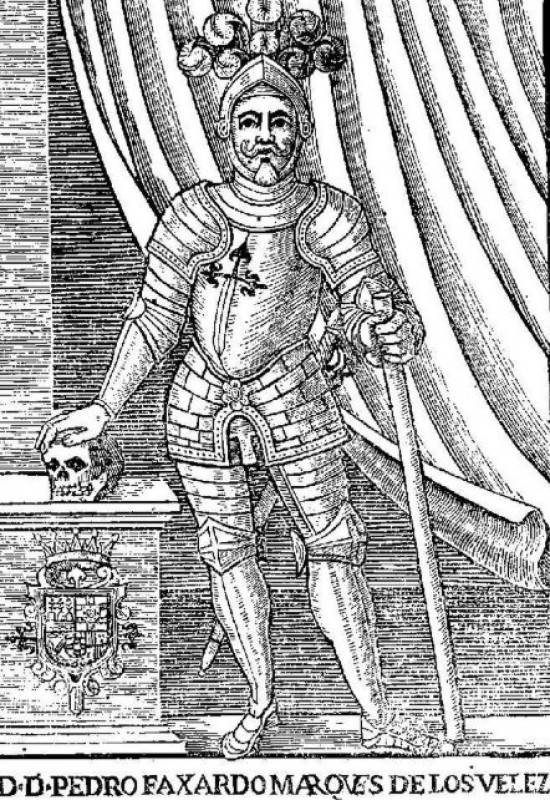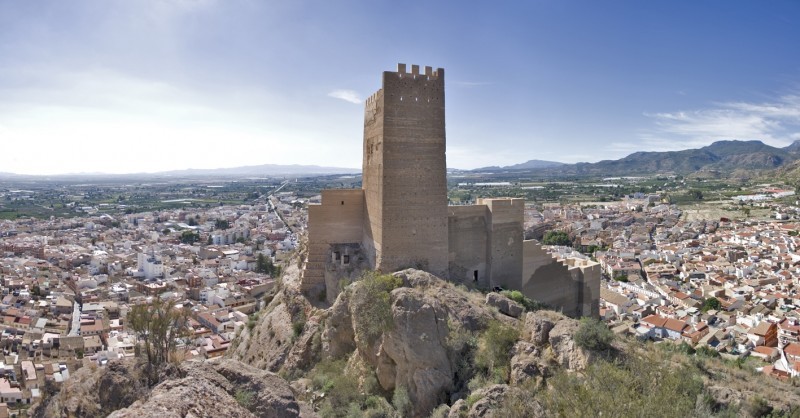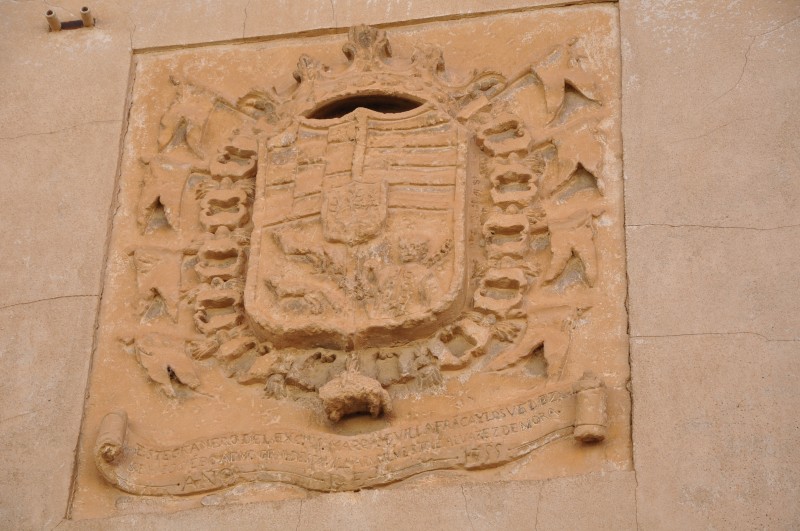- Region
- Águilas
- Alhama de Murcia
- Jumilla
- Lorca
- Los Alcázares
- Mazarrón
- San Javier
-
ALL AREAS & TOWNS
- AREAS
- SOUTH WEST
- MAR MENOR
- MURCIA CITY & CENTRAL
- NORTH & NORTH WEST
- TOWNS
- Abanilla
- Abarán
- Aguilas
- Alamillo
- Alcantarilla
- Aledo
- Alhama de Murcia
- Archena
- Balsicas
- Blanca
- Bolnuevo
- Bullas
- Cañadas del Romero
- Cabo de Palos
- Calasparra
- Camping Bolnuevo
- Campo De Ricote
- Camposol
- Canada De La Lena
- Caravaca de la Cruz
- Cartagena
- Cehegin
- Ceuti
- Cieza
- Condado de Alhama
- Corvera
- Costa Cálida
- Cuevas De Almanzora
- Cuevas de Reyllo
- El Carmoli
- El Mojon
- El Molino (Puerto Lumbreras)
- El Pareton / Cantareros
- El Raso
- El Valle Golf Resort
- Fortuna
- Fuente Alamo
- Hacienda del Alamo Golf Resort
- Hacienda Riquelme Golf Resort
- Isla Plana
- Islas Menores & Mar de Cristal
- Jumilla
- La Azohia
- La Charca
- La Manga Club
- La Manga del Mar Menor
- La Pinilla
- La Puebla
- La Torre
- La Torre Golf Resort
- La Unión
- Las Palas
- Las Ramblas
- Las Ramblas Golf
- Las Torres de Cotillas
- Leiva
- Librilla
- Lo Pagan
- Lo Santiago
- Lorca
- Lorquí
- Los Alcázares
- Los Balcones
- Los Belones
- Los Canovas
- Los Nietos
- Los Perez (Tallante)
- Los Urrutias
- Los Ventorrillos
- Mar De Cristal
- Mar Menor
- Mar Menor Golf Resort
- Mazarrón
- Mazarrón Country Club
- Molina de Segura
- Moratalla
- Mula
- Murcia City
- Murcia Property
- Pareton
- Peraleja Golf Resort
- Perin
- Pilar de la Horadada
- Pinar de Campoverde
- Pinoso
- Playa Honda
- Playa Honda / Playa Paraíso
- Pliego
- Portmán
- Pozo Estrecho
- Puerto de Mazarrón
- Puerto Lumbreras
- Puntas De Calnegre
- Region of Murcia
- Ricote
- Roda Golf Resort
- Roldan
- Roldan and Lo Ferro
- San Javier
- San Pedro del Pinatar
- Santiago de la Ribera
- Sierra Espuña
- Sucina
- Tallante
- Terrazas de la Torre Golf Resort
- Torre Pacheco
- Totana
- What's On Weekly Bulletin
- Yecla


- EDITIONS:
 Spanish News Today
Spanish News Today
 Alicante Today
Alicante Today
 Andalucia Today
Andalucia Today
The Fajardos, Marqueses de Los Vélez and overlords of Alhama de Murcia for centuries
The dynasty ruled over Alhama from the 14th to the 19th century
The names of Vélez and Fajardo are frequently seen throughout the Region of Murcia and are linked with castles, Murcia Cathedral, churches, emblematic buildings and coats of arms in numerous municipalities, all of which points to the importance of the family's role in the history of south-eastern Spain.
The family first began to rise to prominence after Murcia was reconquered from the Moors in the 13th century and maintained a near-feudal supremacy in many parts of the Region until well into the 19th century, although they were at the height of their power, influence and affluence in the 15th and 16th centuries: to appreciate their importance in the development (or, some might argue, lack of development) of Alhama de Murcia over the centuries, consult this short history of Alhama.
Origins of the family
The true origins of the Fajardos are shrouded in mystery, although according to some accounts they originally came from Ortigueira in Galicia, and arrived in the Kingdom of Murcia during the invasion by Aragón between 1296 and 1304, bearing the surname Gallego. However, there is no specific historical evidence to back up this story.
At this time Spain had not yet become one country and comprised a number of kingdoms, the most relevant to the history of Murcia being those of Castilla, Léon, Aragón and Granada. Castilla and Aragón were both independent, ambitious kingdoms, with their own Catholic monarchies, and had been engaged in a slow push down to the south of the peninsula in a bid to expel the Moors from Spain and take control of their territories. They were supported in this struggle by powerful religious orders of warrior knights such as the Knights Templar and the Order of Santiago.
In 1243, the Kingdom of Murcia was surrendered by the Moors to Prince Alfonso of Castilla, later King Alfonso X, who sealed an alliance with the Kingdom of Aragón by marrying the daughter of King Jaime I of Aragón, Violant. 20 years into his reign there was a serious Moorish uprising, crushed with the assistance of Aragonese forces, the price for military assistance being the granting of lands to noble families who had supported the throne and the expulsion of the Moorish population from the region.
When Alfonso died a war of succession broke out, culminating in the invasion of the Region of Murcia by the Kingdom of Aragón: if the stories are true, this is the moment when the Fajardos arrived in Murcia.
No monarch in this era had absolute power, relying instead on a complicated diplomatic balancing act to maintain the support of the nobility while also ensuring that no family became too powerful to challenge their own power base. The monarchs granted privileges and profits to those among the nobility who supported them, and these noble families became absolute rulers in their own fiefdoms, holding control over their territories and squeezing the maximum possible profit from their land through the taxes they imposed and raised.

In the late 15th century Spain was united through the marriage of Isabel of Castilla and Fernando of Aragón, the "Catholic Monarchs". Under their rule the Moors were finally expelled from Granada and Spain, and the basis of the modern State was established: one true faith (this was in reality the only thing uniting the two kingdoms from which the couple came), one army and one territory. And upon their ascent, and successful defeat of the Moors, they consolidated their power by rewarding again their supporters, among them the Fajardos.
The most important Fajardos
Pedro López Fajardo, Mayor of Ceuti and Pliego
The first mention made of the family in historical documents concerns Pedro López Fajardo, who reached the position of Mayor of Ceutí and Pliego in the first third of the 14th century. This he apparently achieved through his links with the important military Order of Santiago, which had assisted the kings of Castilla in their "Reconquista" of much of Spain, fighting in battle against the Moors.
Alfonso Yáñez Fajardo I
The first “Adelantado” (Governor) in the family was Alfonso Yáñez Fajardo I in 1383, who was appointed by Juan I. He overcame serious internal conflicts in the kingdom of Murcia, won a great victory over Farax ben Reduán, a local chief from Granada, at Puerto de la Olivera, and also lent support to Juan I in his Portugese campaign in 1382.
Alfonso Yáñez Fajardo II
After a gap of 18 years his son, Alfonso Yáñez Fajardo II, occupied the same position, which he held from 1424 to 1444, and after his death the post was handed down from generation to generation within the family. He was the son of Yáñez Fajardo I by his second wife, Teresa Rodríguez de Avilés, and this second line of descent became the one to hold the title.
Yáñez Fajardo II had a military career on the border with the kingdom of Granada, and took part in various campaigns between 1433 and 1438. He captured Xiquena and Tirieza, and was the first to conquer the future homeland of his family in Vélez Rubio and Vélez Blanco, (now in Almería) as well as various parts of the Almanzora valley. Most of his gains were lost after his death, when the forces of Granada were superior to those of Murcia.
Yáñez Fajardo II married twice. His first wife was María Rodríguez Mexía, who gave birth to a son, Alonso Fajardo, who died in battle in the Rambla de Vera in 1434. The second wife was María de Quesada, whose son was named Pedro Fajardo, and was the grandfather of another Pedro, the 1st Marqués de los Vélez.
Pedro Fajardo Quesada
 His son, Pedro Fajardo Quesada was the first great Adelantado of the Kingdom of Murcia, occupying the post from 1444 until 1482, spanning the reigns of three monarchs (Juan II, Enrique IV and Isabel la Católica - who married Ferdinand of Aragón and united Spain). Before he came of age his cousin, Alonso Fajardo “El Bravo”, disputed his right to the position, and it was Fajardo el Bravo who won the famous victory for Murcia against Granada at the Battle of Los Alporchones on 17th March 1452. However, he was overcome at his last stronghold in Caravaca in 1465.
His son, Pedro Fajardo Quesada was the first great Adelantado of the Kingdom of Murcia, occupying the post from 1444 until 1482, spanning the reigns of three monarchs (Juan II, Enrique IV and Isabel la Católica - who married Ferdinand of Aragón and united Spain). Before he came of age his cousin, Alonso Fajardo “El Bravo”, disputed his right to the position, and it was Fajardo el Bravo who won the famous victory for Murcia against Granada at the Battle of Los Alporchones on 17th March 1452. However, he was overcome at his last stronghold in Caravaca in 1465.
Pedro Fajardo was now the most powerful man in the south-east of the Iberian Peninsula. He was made Lord of Cartagena by Enrique IV, but later returned the land to the Crown in exchange for Los Vélez and Cuevas.
From the 16th century onwards the Fajardo family, had become the most prestigious in the Kingdom of Murcia, cementing family ties with the highest ranks of Spanish nobility.
Pedro Fajardo Chacón (1478?-1546), 1st Marqués de los Vélez
The son of Juan Chacón, treasurer to the Catholic Monarchs, and Luisa Fajardo Manrique, he was a warrior, Adelantado of the Kingdom of Murcia and a trader in the European alum market. He married three times and his eldest son and successor, Luis Fajardo, was born to his second wife, Mencía de la Cueva. On 12th July 1507 Queen Juana “La Loca” bestowed the title of Marqués de los Vélez upon him.
His warlike character led him into continual conflict with the strong-willed Bishop of Almería, Diego de Villalán, with constant accusations and counter-accusations flying back and forth while both were in power. These accusations concerned the right of both to raise taxes and Pedro’s refusal to fund the construction of new churches in the towns under his control.
Luis Fajardo de la Cueva (b. Murcia 1509?, d. Vélez Blanco, 1574), 2nd Marqués de los Vélez
Luis Fajardo married Leonor de Córdoba y Zúñiga, the sister of the Great Captain in 1526, and in 1535 he also became Marquis of Molina. He assisted Carlos V in various military campaigns in Europe and north Africa. His rivalry with the Duke of Alba gave rise to various legal disputes between the Council of Los Vélez and the Council of Huéscar concerning boundaries and pasture land. During the War of the Alpujarras (1568-1570) he organized an armed party which launched three military campaigns, and was the rival of the Marqués de Mondéjar, the Captain General of the Kingdom of Granada.
Pedro Fajardo Córdoba (b. Vélez Blanco c. 1530, d. Murcia 1579), 3rd Marqués de los Vélez.
Pedro inherited the title just five years before his death, and spent most of his life as a high-ranking official in the court of Felipe II. He was a Councillor of State, ambassador to Poland and Germany, and chief steward to Felipe’s Queen, Ana de Austria. He fell out of favour in court due to his relationship with Antonio Pérez and, above all, his involvement in the assassination of Escobedo. Sick and disenchanted with court politics, he died on his way to Los Vélez to take possession of his lands and retire there. His death marks the end of the presence of the lord within the boundaries of Los Vélez, and he was the first Marquis to live his whole life outside his territorial possessions.
Alhama de Murcia and the Fajardos

Located on the road between Murcia and Lorca, the “villa” of Alhama de Murcia was the second domain to fall into the hands of the Fajardo family. This property was not purchased but was awarded by the 
Despite this, the “villa” ended up in the hands of Alfonso Yáñez Fajardo II, the son of the second wife of Yáñez Fajardo I, who was also appointed Adelantado Mayor (chief governor) of Murcia. The two branches of the Fajardo family took opposite sides in the conflict between the princes of Aragón and Juan II, and at the end of the struggle the entire family fortune was taken by Yáñez Fajardo II, who had chosen the winning side.
When the Fajardos created their first entailed estate Alhama was included within it. At the end of the 16th century the Marquises’ administration created the “Alcaldía Mayor de Alhama y Librilla”, based in Alhama. Within this council the Marquis himself ruled supreme, and appointed the members of the council, choosing between the two candidates nominated by every outgoing councillor.
In 1547, one of the townsmen, Pascual Rubio, at last took legal action against Luís Fajardo, the Marquis at the time, and although the dispute lasted over 40 years, until 1592 - the Spanish legal system was not famed for its speed even then! - it was eventually decided in favour of the common people. While the Marquis claimed that rights had been granted to his predecessors for "time immemorial", the court found that in 13 of the 16 points challenged, they had not.
However, the 3 points in which the Marquis’ claims were upheld were the worst for the townspeople: they still had to hand over a quarter of their crops obtained by irrigation, an eighth of all those achieved on non-irrigated land, and a 12th part of their crops of barilla (a plant from which soda was obtained).
In 1635 the council of Alhama consisted of two mayors and four aldermen. At this time there were 300 people living in Alhama, and the Marquis’ right to receive from them the “alcabala” and “tercia” taxes was justified not by royal approval but by time-honoured tradition. In this way their control over Alhama in a near-feudal social structure lasted until as recently as 1834.
Among the notable buildings which can still be seen in Alhama de Murcia and which are associated with the Fajardos are the castle, the Casa Tercia and the Finca del Azaraque.
For more local information in English relating to the Alhama de Murcia municipality, including news and forthcoming events, go to Alhama Today.
Cartagena
El Carmoli
Islas Menores and Mar de Cristal
La Manga Club
La Manga del Mar Menor
La Puebla
La Torre Golf Resort
La Union
Los Alcazares
Los Belones
Los Nietos
Los Urrutias
Mar Menor Golf Resort
Pilar de la Horadada
Playa Honda / Playa Paraiso
Portman
Roldan and Lo Ferro
San Javier
San Pedro del Pinatar
Santa Rosalia Lake and Life resort
Terrazas de la Torre Golf Resort
Torre Pacheco
Aledo
Alhama de Murcia
Bolnuevo
Camposol
Condado de Alhama
Fuente Alamo
Hacienda del Alamo Golf Resort
Lorca
Mazarron
Puerto de Mazarron
Puerto Lumbreras
Sierra Espuna
Totana
Abaran
Alcantarilla
Archena
Blanca
Corvera
El Valle Golf Resort
Hacienda Riquelme Golf Resort
Lorqui
Molina de Segura
Mosa Trajectum
Murcia City
Peraleja Golf Resort
Ricote
Sucina
Condado de Alhama
El Valle Golf Resort
Hacienda del Alamo Golf Resort
Hacienda Riquelme Golf Resort
Islas Menores and Mar de Cristal
La Manga Club
La Torre Golf Resort
Mar Menor Golf Resort
Mazarron Country Club
Mosa Trajectum
Peraleja Golf Resort
Santa Rosalia Lake and Life resort
Terrazas de la Torre Golf Resort
La Zenia
Lomas de Cabo Roig

CAMPOSOL TODAY Whats OnCartagena SpainCoronavirusCorvera Airport MurciaMurcia Gota Fria 2019Murcia property news generic threadWeekly Bulletin

